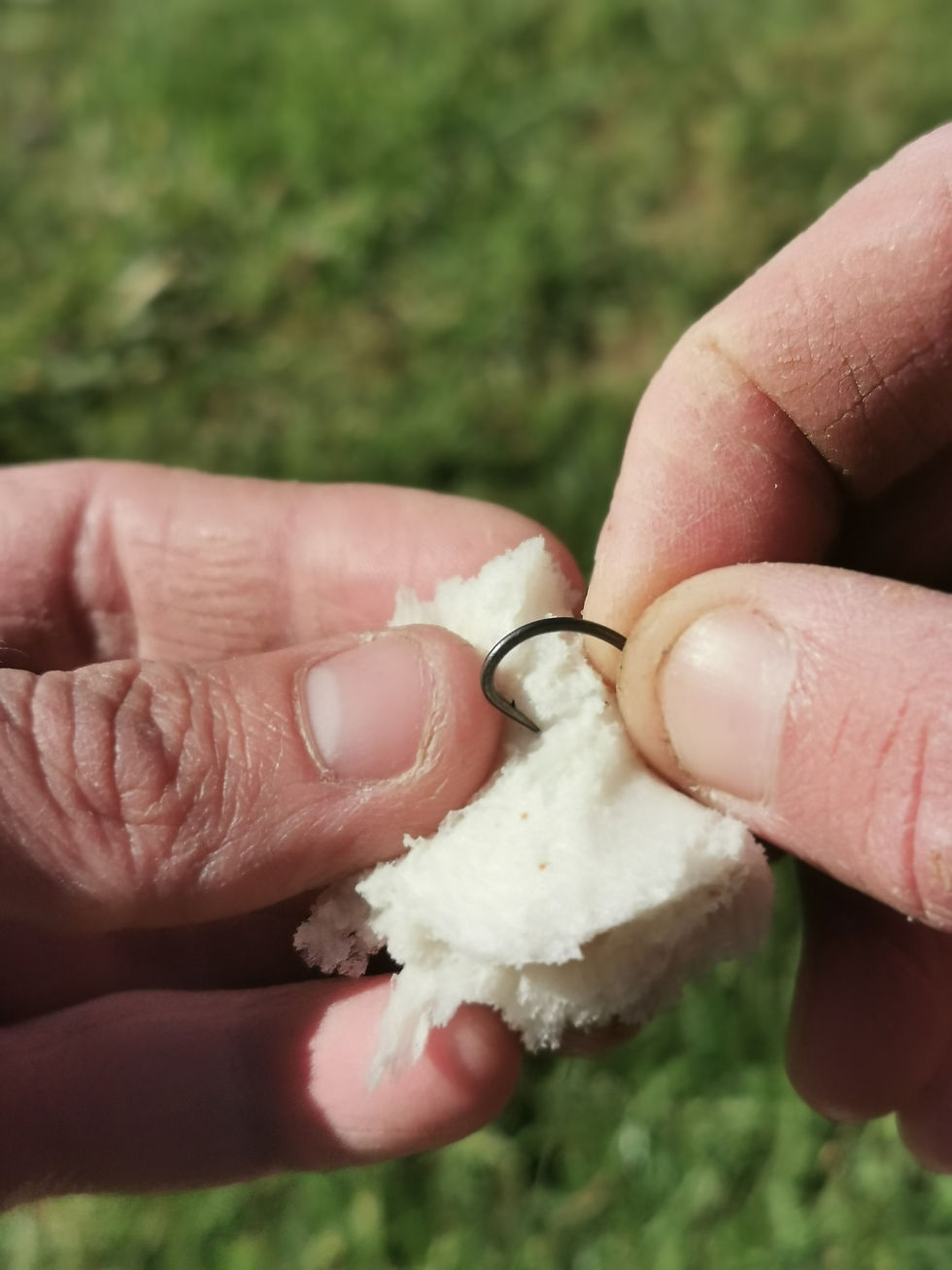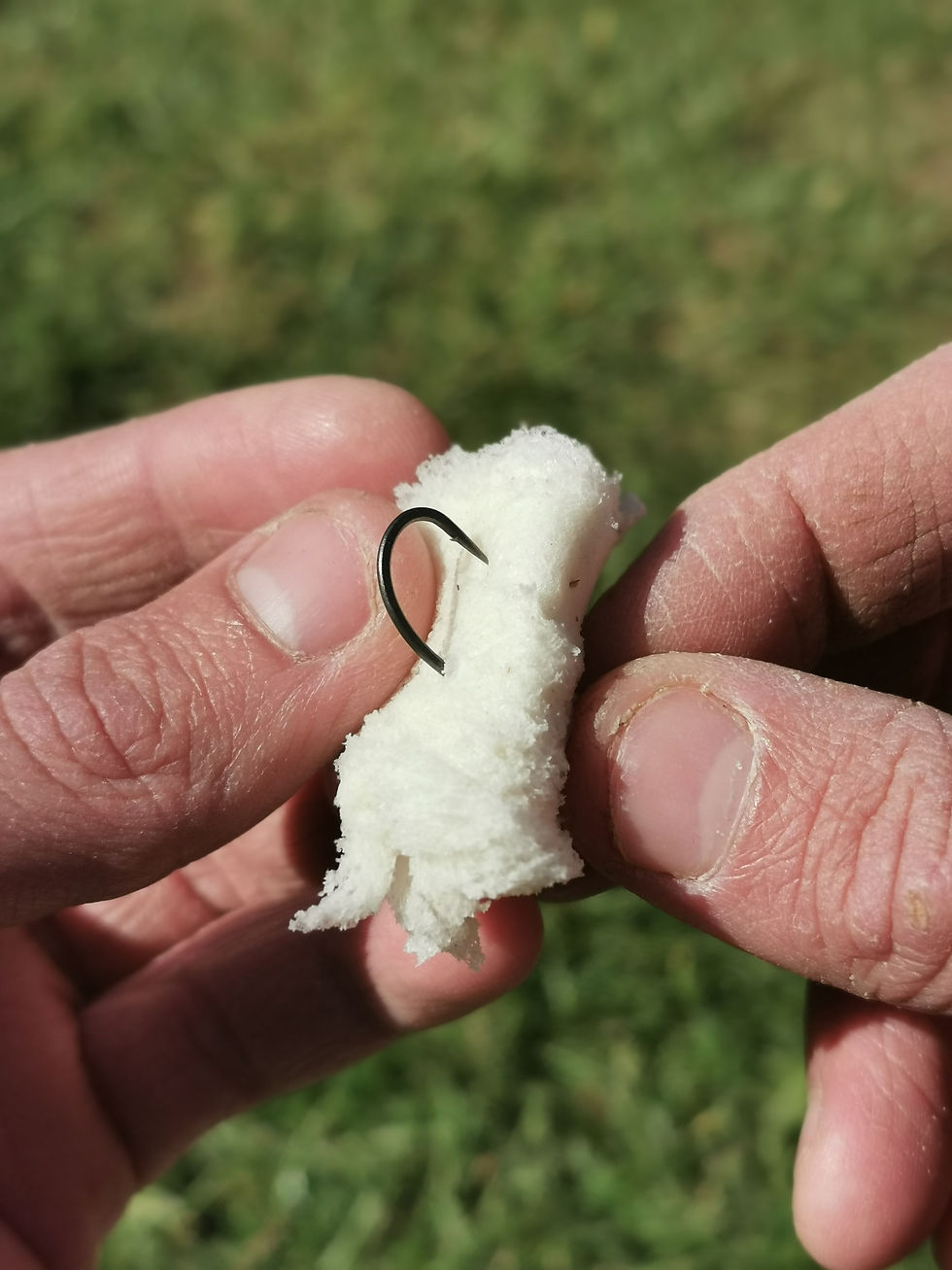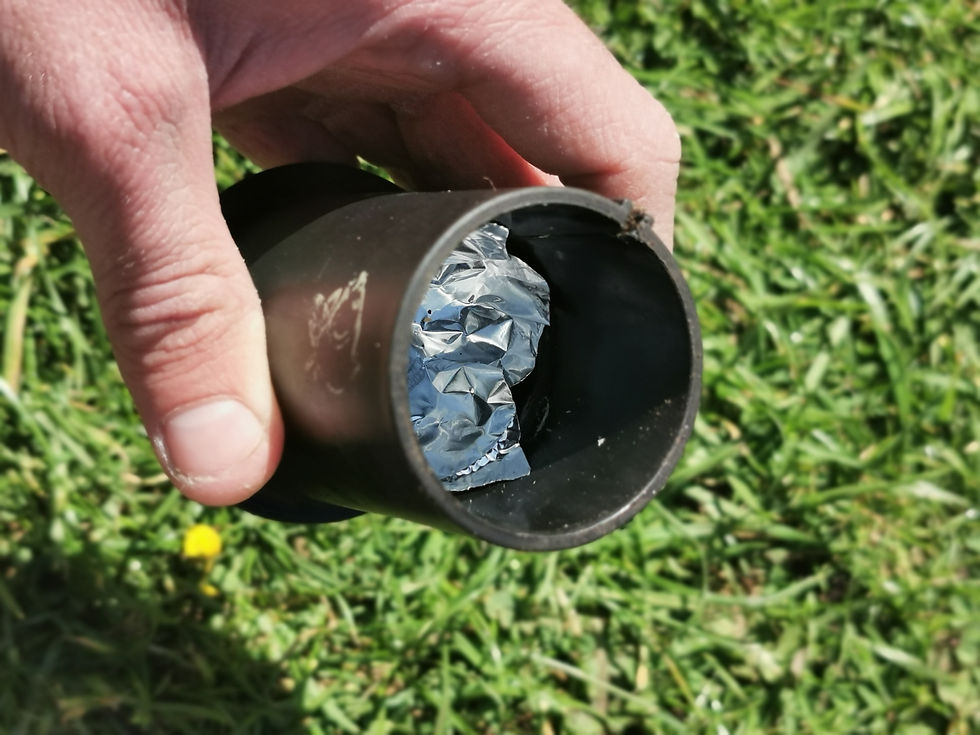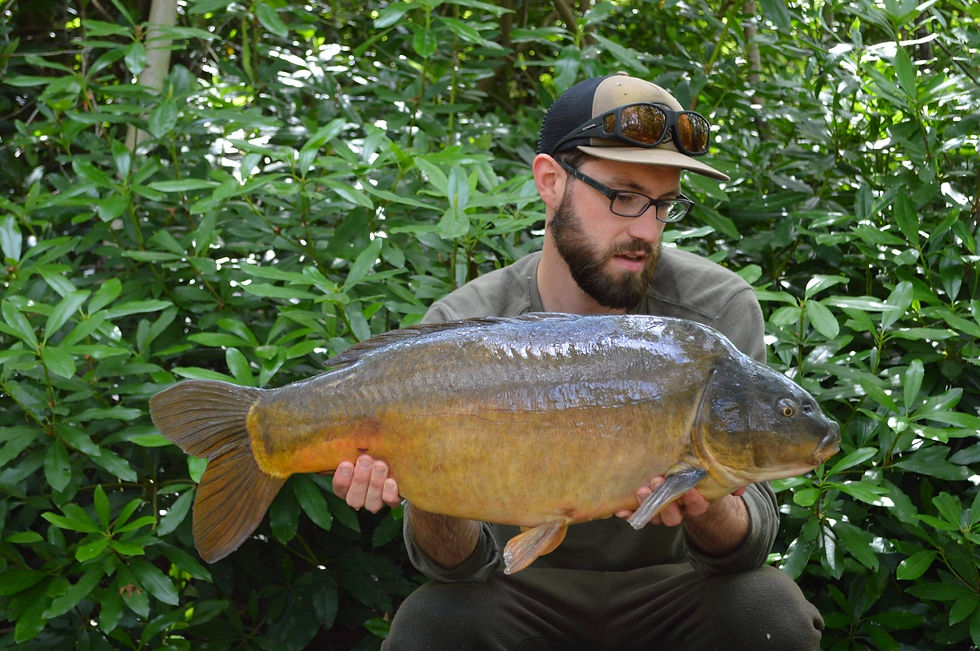Bread 'edges'
- Lewis Gaukrodger
- May 7, 2020
- 4 min read
Watching big carp bask in the sun amongst a plethora of weed with their shoulders creating bow waves across the surface and tails swirling erupting mesmerising eddies, gets the heart pounding for any specimen angler. The challenge to pursue them on the surface triggers excitement with aborted takes and them frustrating moments when the hook bait is pulled clean out the mouth.
When they are in this mood, high in the water- surface baits are number one and for me that has to be bread- Warburton's super toastie if we are being really specific though Warburton's toastie usually suffices.

There is nothing complicated about freelining bread and the introduction of the bread bomb by Nash revolutionised the way anglers use bread and particularly the distance bread can be cast.
Personally I don't have a separate set up for freelining surface baits, I simply use my standard 12.5ft 3.25tc freespirt CTX, pit reel and a long length of surface leader loop to loop with my main line.
The majority of opportunities that arise for myself to target carp on the surface are at close range often within the distance of an under arm flick. However ensuring that the bread stays on the hook for this cast is crucial and for this my first little 'edge' comes into play.
1. 'Leaf Stem Stop' The simple use of a doubled over blade of grass or leaf stem ensures the bread stays on the hook during the cast and even allows the bread to be dunked to increase its weight prior to casting. Taking a decent piece of bread, I fold this over and pass the hook through the side of the fold, working the hook around the bread, the point of the hook can then be lightly positioned onto the bread creating a void in the bend of the hook, in this gap a folded piece of grass or leaf stem can be slipped before the hook is gently pushed into the bread creating pressure on the grass or stem.







Due to their size they will not pull through the bread, though once cast onto the surface and the bread has absorbed water the blade of grass or leaf stem will not impeed hook ups in the slightest. I also employ this when freelining for chub and when a decent flick is required to reach the far bank, it also gives you some reasurance on a long cast that the line can be picked up and straightened without dislodging the bread from the hook too. I prefer to use a decent sized curve shank hook- usually a size4 for this as the increases wire gauge of the hook helps the leaf stem or blade of grass have a bigger area to hold against oppose to a smaller wire gauge which would almost encourage the leaf stem to bend around it.
2. Catapult cast A problem I encounter alot when freelining is the momentum required to cast a light bait such as bread. A big swing of the rod is often required which can cause problems if the area you are fishing is overgrown. I first started using the technique of catapult casting when fishing under some over hanging branches on a far margin across a narrow section of gravel pit. Trying to cast under them was impossible given the arc required to get the distance. Using some small single sticks to position the rod on my right hand side (with an open bail arm) I could kneel by the rod and holding the catapult sideways in my left hand (with the V side of the catapult on the right hand side)fire my hookbait almost to the far margin skimming the surface under the overhanging branches.
Another time when I use this technique is if the fish are very close to the bank and to avoid the need to pendulum swing a piece of bread potentially giving away your cover. The hookbait can literally be fired without even lifting the tip of the rod. Once again an idea way of approaching wary chub on small waterways.
3. Nash Deliverance 'Bread' Ball Maker
A big issue I find when catapulting free offering of ripped up pieces of bread is that they swerve off dramatically left or right (almost like throwing a boomerang) and to target feed a small area is very difficult. Add into this a wind or chop factor and you have a shot gun approach.
This is where the Nash Deliverance ball maker is not just useful for groundbait and scaulded pellets but also bread.
Taking the centre of a piece of fresh (this is important as dry or old bread will not bind and compress into a ball) Warburton's toastie and rip or cut into £2 size pieces. Taking the 40mm Nash deliverance ball maker gently line the bottom of the larger section with a small piece of tin foil then stack up 6 or 7 pieces of bread ontop. Apply another small piece of tin foil on top of the last piece of bread and compress the 2 halves of the ball maker together, press the 2 release buttons. Remove the tin foil (save to use again) and you will be left with a formed ball of bread. If need be compress a little more with the palms of your hands. This ball can then be gently catapulted much further and accurately than single pieces of bread. On impact with the surface the indervidual pieces of bread will absorb water and swell hence seperating. This enables fish at a great distance to be targeted with free offerings, combined with a bread bomb cast over the top is deadly.






There is definitely something very rewarding about catching carp off the top, though the ability to witness fish reject the hookbait can be as equally frustrating. Though with a few little tweeks in approach the bread will more than likely be slurped off the surface and an adrenaline fueled battle embarked upon!






Comments